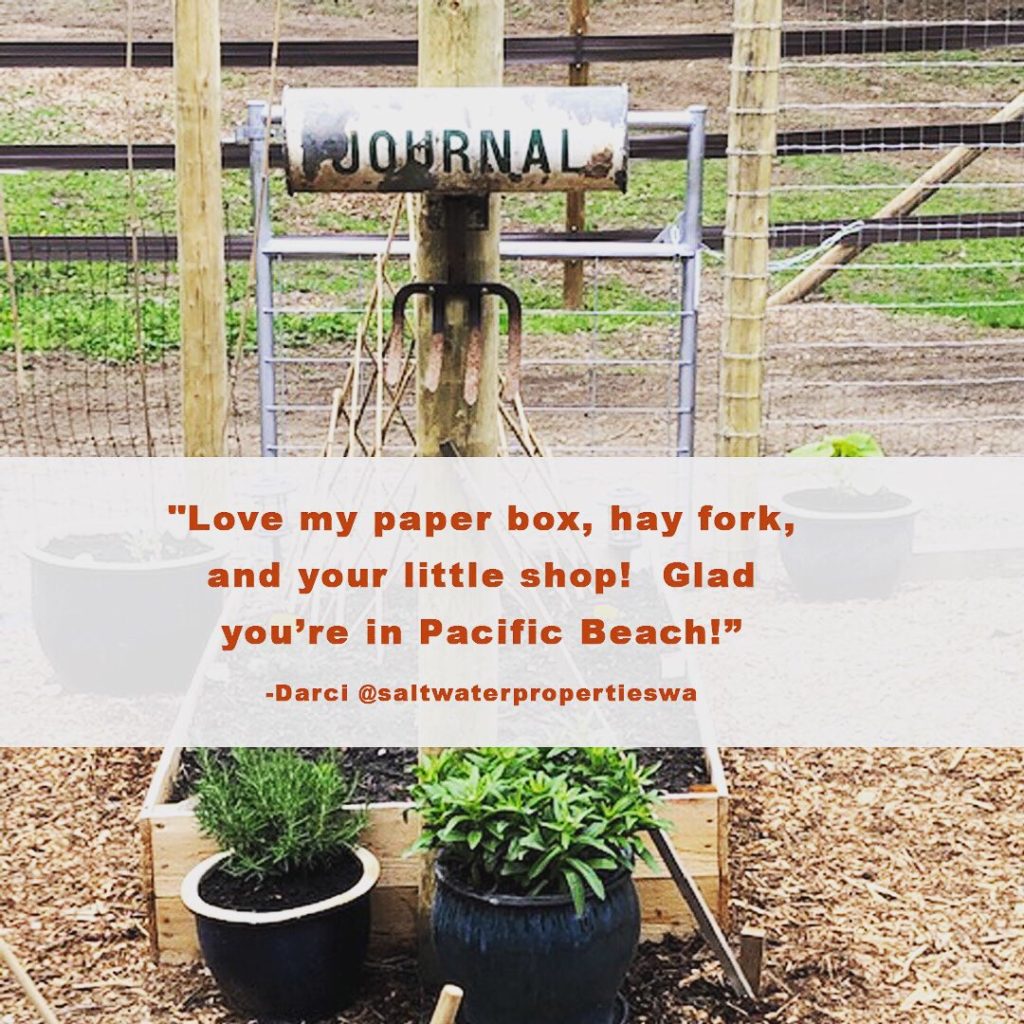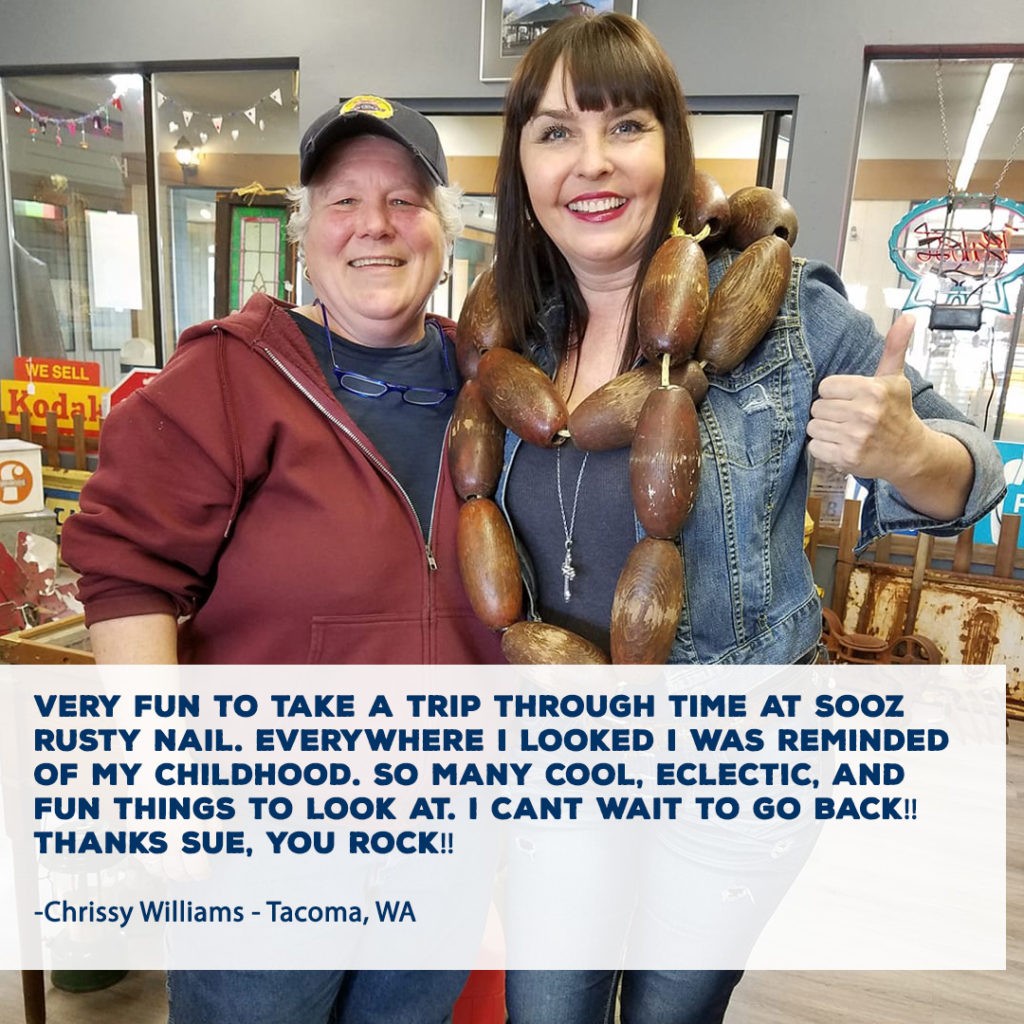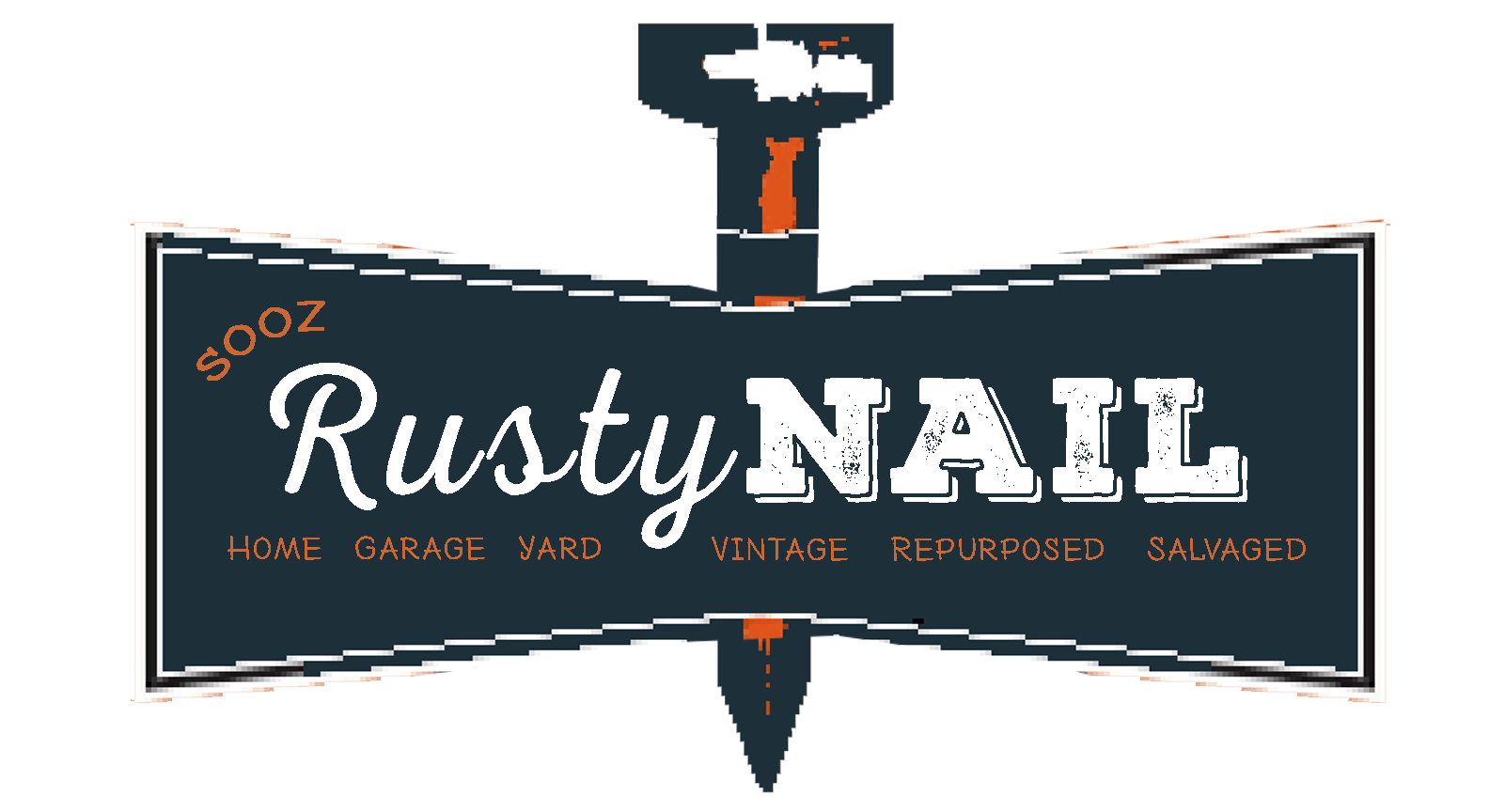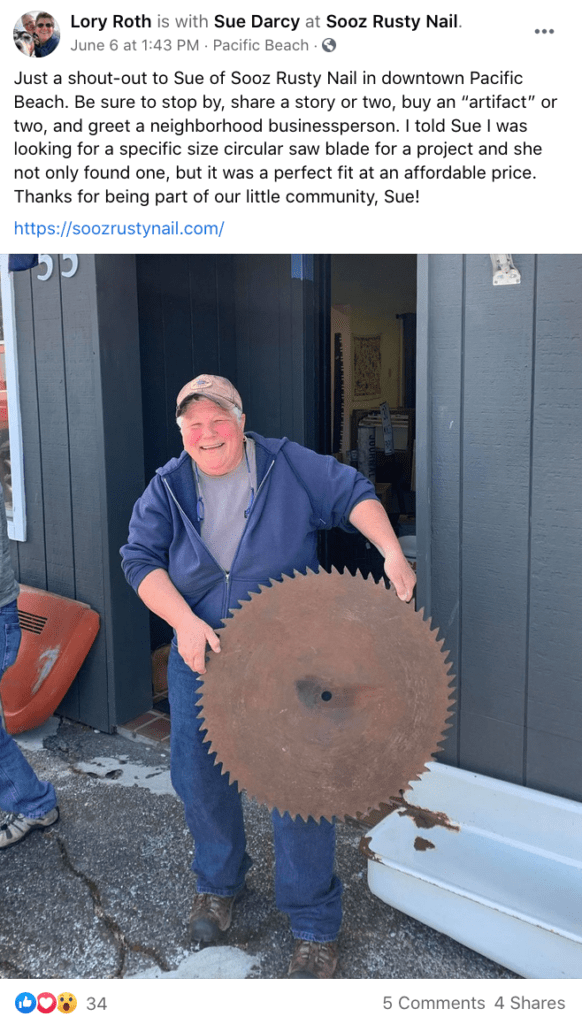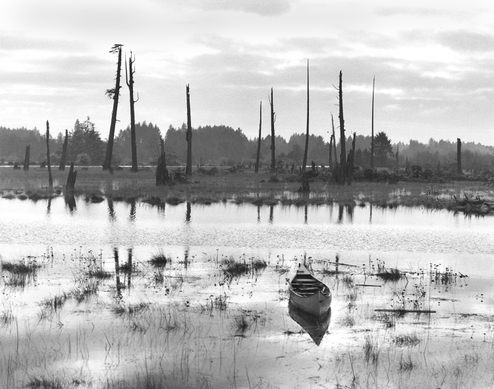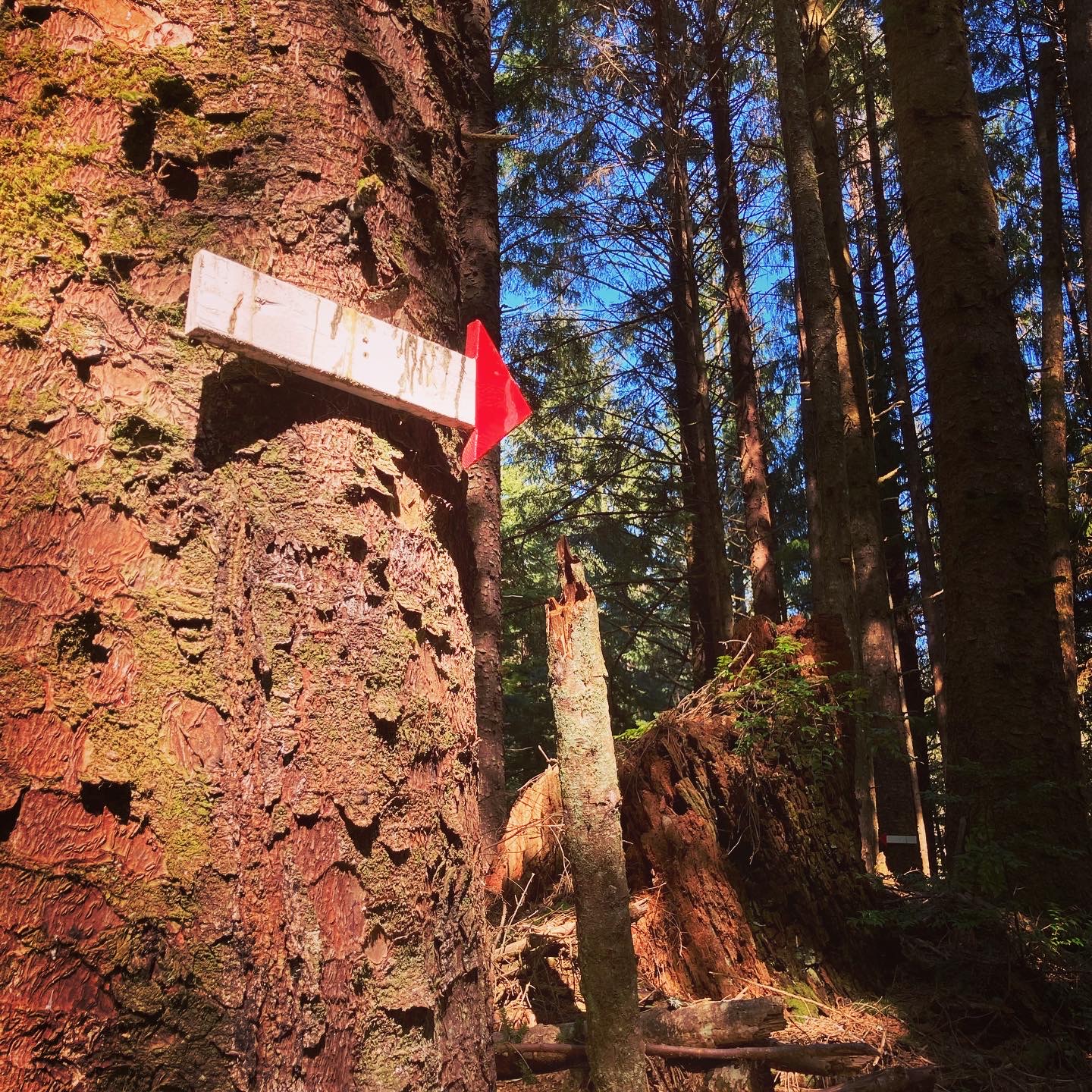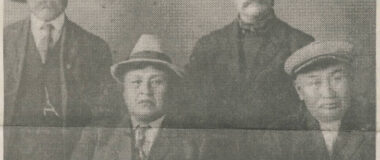Sooz Guide to making a living as a picker
First off, making a living as a picker is a viable profession and it’s good to see more interest in the reuse, recycle, space especially since every picker has their own style. Some go hunting at estate sales and others do the thrift store circuit, shop online, or wait for other pickers and collectors to bring them goods. And then there’s those who wheel-and-deal their way into situations like you see on TV. Often it’s not a singular method and in my case it’s mainly networking my way into picks coupled with a willingness to travel thousands of miles per year to get the goodies you’ll find in my shop. I’ll be the first to admit that I happily stop at garage or estate sales along my routes and I spend time in antique malls but the latter is more for research than buying. ← I have to know the overpriced antique store prices in order to price my stuff to move!
Sooz Evolution as a Picker
Prior to opening the shop, I was a “backyard picker” meaning I still traveled to find the goods but sold them out of my garage. It was good. No real overhead, less pressure, but lower income. Trade off was that I was able to focus on items I personally enjoy i.e. architectural salvage, yard art, fencing, doors and LARGE (and heavy) what-nots.
If you wanted something of mine, you pulled up in the alley at a set time and we kibitzed, exchanged money, loaded your vehicle, and waved good-bye. I cared nothing about a website, marketing, point of sale, retail cycles, or merchandising and was open by appointment so I had ample time to pick. Sounds like fun, right? Yes, until we moved to the beach and suddenly nobody wanted to drive three or four hours for fencing, barnwood, or an old cast iron sink.
Which Business Model is Right for you?
How to build your business and your business model are personal. They all have pros and cons so it’s important to think it through before making a costly move. For starters it’s good to know upfront:
- How much money do you have to invest?
- How social do you want to be?
- How much time do you need to spend picking?
- How much time do you have to build your business?
- How much are you depending on the income?
Here are the outlets I tried or considered and how I ultimately came to a final decision of a brick-and-mortar storefront at 55 Main Street, Pacific Beach, WA:
Backyard Picking
Selling locally from home involves being available to meet the buyer, usually lots of coordination, thick skin to tolerate no shows and a place to store the stuff.
Main sales channels include Facebook Marketplace, Offer-Up, Craigslist or other apps. Selling on auction sites like eBay are limited to what you’re willing to ship. They also have seller fees and trips to the post office to deal with.
Pros:
You control the posting and selling schedule and can easily take time off without disappointing customers.
Cons:
Making a living wage requires hustle to acquire goods. Working in a local market vs. mailing items takes research to figure out which products will net the best return-on-investment.
Antique Mall Booth Rental
Antique Mall booths are generally small which means your focus has to be on small items in order to maximize profit per square foot. Dealing in smalls can be a barrier to sales due to the necessity of secure displays for the most valuable items and vulnerability to theft for others.
If you choose this path, keep in mind people don’t always want to walk up to the register for help opening a locked display. Especially if they’re lookie-loo-ing or forced to ask because they can’t see the price tag. Cost-wise it’s usually a booth fee plus a percentage of sales. Sometimes you have to work a shift.
Pros:
You’re there when you want and your goods are in a location away from home. The mall, if it’s a good one, does the bulk of marketing. Being in with other vendors means more people will walk through because that sort of scenario is enjoyable to many folks.
Cons:
Vendors often overprice goods to cover overhead costs associated with booth fees which makes it more difficult to sell enough to support the booth. With many vendors, there’s a lot of competition for sales and booth location matters a lot in large malls because people may get tired or forced to leave due to unruly kids or other distractions.
Vintage Flea or Swap Meet Booth
Flea markets usually happen on a regular cadence and as a vendor you must be there to man (or woman) your own booth or arrange coverage in your absence. Indoor fleas like Bremerton Vintage Flea or YardBirds in Chehalis allow you to leave goods at your booth when the building is closed. Outdoor fleas generally require setting up each time.
Cost is typically lower than antique malls because you’re not subsidizing a cashier’s salary and there’s typically no additional percentage paid per sale.
Pros:
You’re there when you want and your goods are in a location away from home. The mall, if it’s a good one, does the bulk of marketing. Being in with other vendors means more people will walk through because that sort of scenario is enjoyable to many folks.
Cons:
Vendors often overprice goods to cover overhead costs associated with booth fees which makes it more difficult to sell enough to support the booth. With many vendors, there’s a lot of competition for sales and booth location matters a lot in large malls because people may get tired or forced to leave due to unruly kids or other distractions.
Vintage Flea or Swap Meet Booth
Flea markets usually happen on a regular cadence and as a vendor you must be there to man (or woman) your own booth or arrange coverage in your absence. Indoor fleas like Bremerton Vintage Flea or YardBirds in Chehalis allow you to leave goods at your booth when the building is closed. Outdoor fleas generally require setting up each time.
Cost is typically lower than antique malls because you’re not subsidizing a cashier’s salary and there’s typically no additional percentage paid per sale.
Pros:
It’s a steady gig, allows you to be social with customers, and is a great way to get to know the regulars and create recurring business. It also gives you a place to conduct business so it takes the backyard picker model up a notch in that regard. You can still sell online locally while offering a convenient, public-facing location for pick up.
Cons:
It’s a commitment which can be unfortunate when you need the day off. The pack in and out type can be a big hassle and extend your day or cause an overnight stay which can reduce profit.
Vintage (Antique) Shows
These events happen periodically all over the country. They’re usually a weekend event that requires a booth set up and tear down and the fee is typically significantly higher than a flea market. Some I’ve seen are multiple hundreds of dollars to reserve a spot.
Pros:
Typically recurring event that promoters work hard to market so tons of customers show up which means a good chance of making money. Also it’s a one-and-done commitment so, you can plan around it and gather stuff to fit the venue. You run your own booth making it easier to build relationships with buyers.
Cons:
Costs can be significant and booths are usually small so you have to carefully select the items you take in order to make a profit. The volume of vendors in one space can be daunting to attendees making booth locations very important. You’ll need a vehicle that can haul your goods and if it’s far out of town, a place to sleep, which can cut into profits.
Retail Shop
Location. Location. Location. A storefront is by far the biggest commitment both in money and time. Before you jump in, consider additional costs like getting the suite ready, point of sale system, internet, insurance, deposit and other expenses. Think about traffic patterns, both vehicle and pedestrian and what about parking? Is it in a mall or your own storefront and which retailers are around and their hours — all of which will impact you.
Pros:
It’s yours and will give you more space than a booth at malls, events, fleas, or swap meets. If you’re successful, it will be incredibly rewarding.
Cons:
Running a shop is long-term commitment with challenges when it comes to getting away for picking. Hiring an employee will be difficult unless you have deep pockets. Marketing is up to you and no matter how much you want to believe that “if you build it, they will come” the truth is you have to invite them to come or they won’t. Which means hiring a marketing person or finding the time to do it yourself. Also forget about weekends or vacations away from work.
Picker Pals Help with Diversification
Every Batman needs a Robin to cover their butt! Same goes for picking. Sure, I go on solo picks but there’s merit to bringing another pair of eyes. In addition to spotting things, they sometimes talk me into things I might not choose. So, there’s a value as it pertains to diversification which is key when your shop is at the beach.
Typically my sidekick is a family member; spouse, son, mom or occasionally aunt Marilyn when she’s in town visiting from Kansas. The one sidekick I have that goes along almost every time is my Boxer, Wrigley but that’s because if I leave her home alone in the backyard, she’ll dig to China and when you live at the beach, digging to China in sand is fairly easy 😉
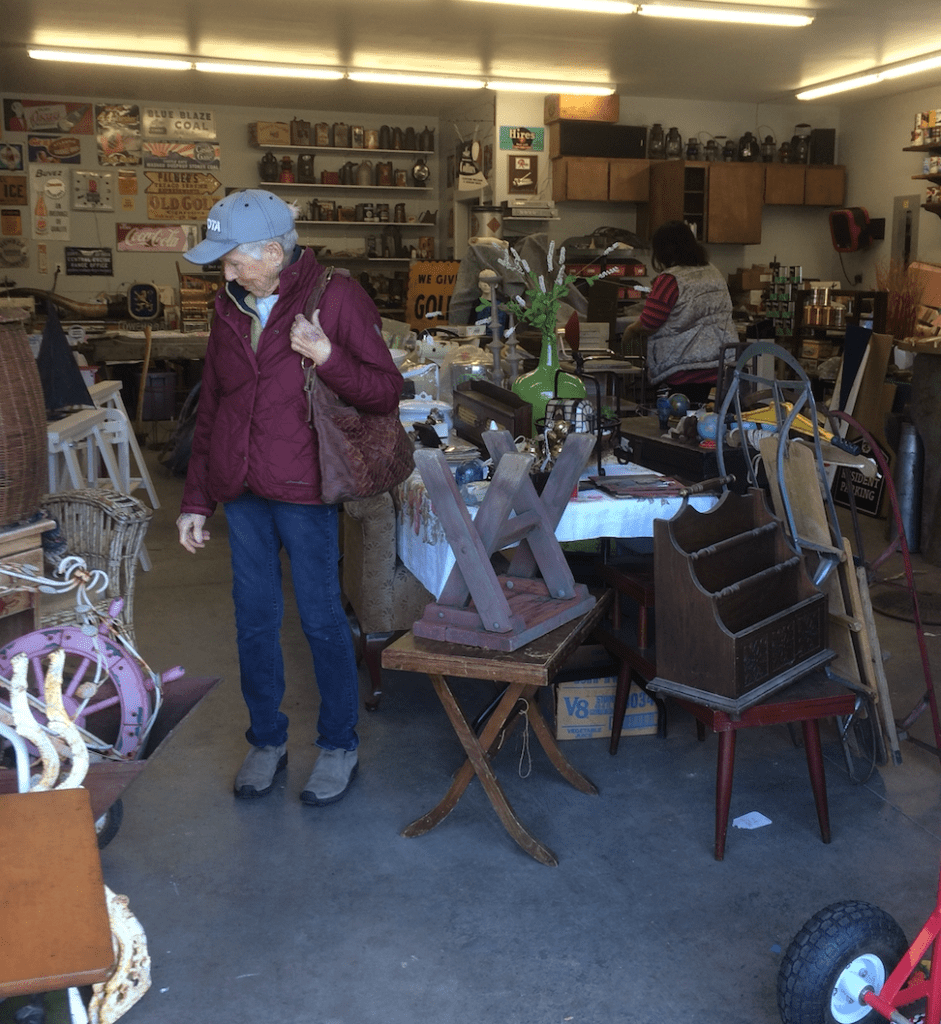
Setting Prices
Warning: this is a hot topic.
It’s hard to know how some folks get their pricing figured out. It seems hit or miss to me and varies so much from place to place. Antique Malls tend to be pricey but that’s just my take. And in barn pic situations it’s all over the place especially if the original collector has passed on and their kids are left to liquidate their stash.
(For me) there are several factors:
- How much I paid
- What I can find it priced at online
- How difficult it is to find it or something like it
- How far I travelled to get it
- What my market can bear
- (rarely) How attached I am to it
Beware of ebay as a pricing tool.
When I use eBay for a pricing guide, I look at what things sold for, not what they are currently being auctioned at. I also look at multiple completed auctions + shipping costs and usually land on the average minus five bucks. May seem random but I figure people are smart enough to know that they can whip out their phone while in my shop to look up the eBay pricing on their own. And they do. I’m in the market to sell, not collect so if I come slightly under eBay, they can walk away with it, feel like they’re getting a deal, and I’m more likely to make a sale.
Marketing your biz
I’m married to a marketer so I’ve been told how to do it right. Not that I always do it right but I try and here’s what I know:
Website
If you’re a full-time picker and plan on selling retail, a website is a necessity. Not everyone is on Facebook and your own website can be a powerful tool to really showcase your value proposition and helps you get found on Google. If you’re a part-time picker, it’s probably a waste of time unless you want to do eCommerce. That said if you’re paying for booth space at an event, vintage flea, or in an antique mall, depending on the price of the booth you might want to research what type of marketing the venue does and if they have a website. If you’ve made a significant investment into someone else’s venue or event by paying for the space, it should come with at least some degree of promotion – and – you should also be prepared to do your own promotion in addition to theirs.
Social Media
Posting pictures on Facebook is fine, it works well and yes, I’ve made sales that way — BUT — social media has rules you need to know in order to win their “game.” On social it’s all about audience engagement rather than number of page likes. You can have the biggest “fan” base in the world but if they aren’t sharing and commenting (a.k.a engaging) you’re not reaching them. Likes have been demoted in the FB algorithms so they don’t actually count that much anymore.
Both my Facebook and Instagram accounts have high engagement rates and I’ve sold random finds on both just by listing new stuff coming into the shop. Also pictures matter! I’ve tried doing both photos with lots of stuff in them and photos that zoom in on one or two items, they’re equally appealing to my audience ← key idea there.
What matters most is connecting with your audience so I can talk all day about how I do but it might not work for you. My suggestion is to try expirament. Post often, see what happens. Post less often, see if it makes a difference and work out a strategy based on what you see, not what the expert who lives in your house says 😉
Email Marketing
It works. Lots of people who are into shopping for cool vintage, repurposed, or salvaged stuff value getting emails from me — especially when they requested to receive emailed. (so if you do a website, make sure it has a subscribe form).
Customers and lookie-loos like to know what I’m bringing into the shop so they can get first dibs on the good stuff. Email is a great way to get the info out since not everyone sees every social post. It’s also good for creating lists of people by what types of things they like.
Some are into yard art, others want toys so as the list grows I can segment fans accordingly in order to get more targeted. One regret I have is not collecting email addresses from the get-go. When I was a back-yard seller, I didn’t care about that so I didn’t do it (despite my spouse telling me to 😉 It would have been nice to connect with those folks now that I have a retail shop since I’m only three hours away. So, that’s a little tip about thinking ahead.
Word of Mouth
As my spouse says, “word of mouth is the only true form of marketing.” People don’t forget when they run into a nice shopping experience and get treated well. To that end, a tremendous amount of my effort goes to creating experiences that bring people back AND make them want to tell others. So far it’s working.
I can tell by the number of repeat customers I get and the number of people who tell me so-and-so sent them. My strategy includes having some large items that people like to take pictures of themselves with – my phone booth works well for that currently. I also make sure to deliver top-notch customer service. For example, a guy was supposed to return to pick up an Oly Beer Barrel sign he’d paid for but it was closing time and he hadn’t returned. Luckily I know his son who runs the local pub so I wrapped up the Oly sign, walked it down there and delivered it. Customer was happy and so was I! In other cases I’ve gone completely out of my way to pick up items for certain customers or little things like that. I call it relationship currency and for me, it’s just as important as money.
So far it’s working. I can tell by the number of repeat customers I get and the number of people who tell me so-and-so sent them. My strategy includes having some large items that people like to take pictures of themselves with – my phone booth works well for that currently. I also make sure to deliver top-notch customer service. For example, a guy was supposed to return to pick up an Oly Beer Barrel sign he’d paid for but it was closing time and he hadn’t returned. Luckily I know his son who runs the local pub so I wrapped up the Oly sign, walked it down there and delivered it. Customer was happy and so was I! In other cases I’ve gone completely out of my way to pick up items for certain customers or little things like that. I call it relationship currency and for me, it’s just as important as money.
